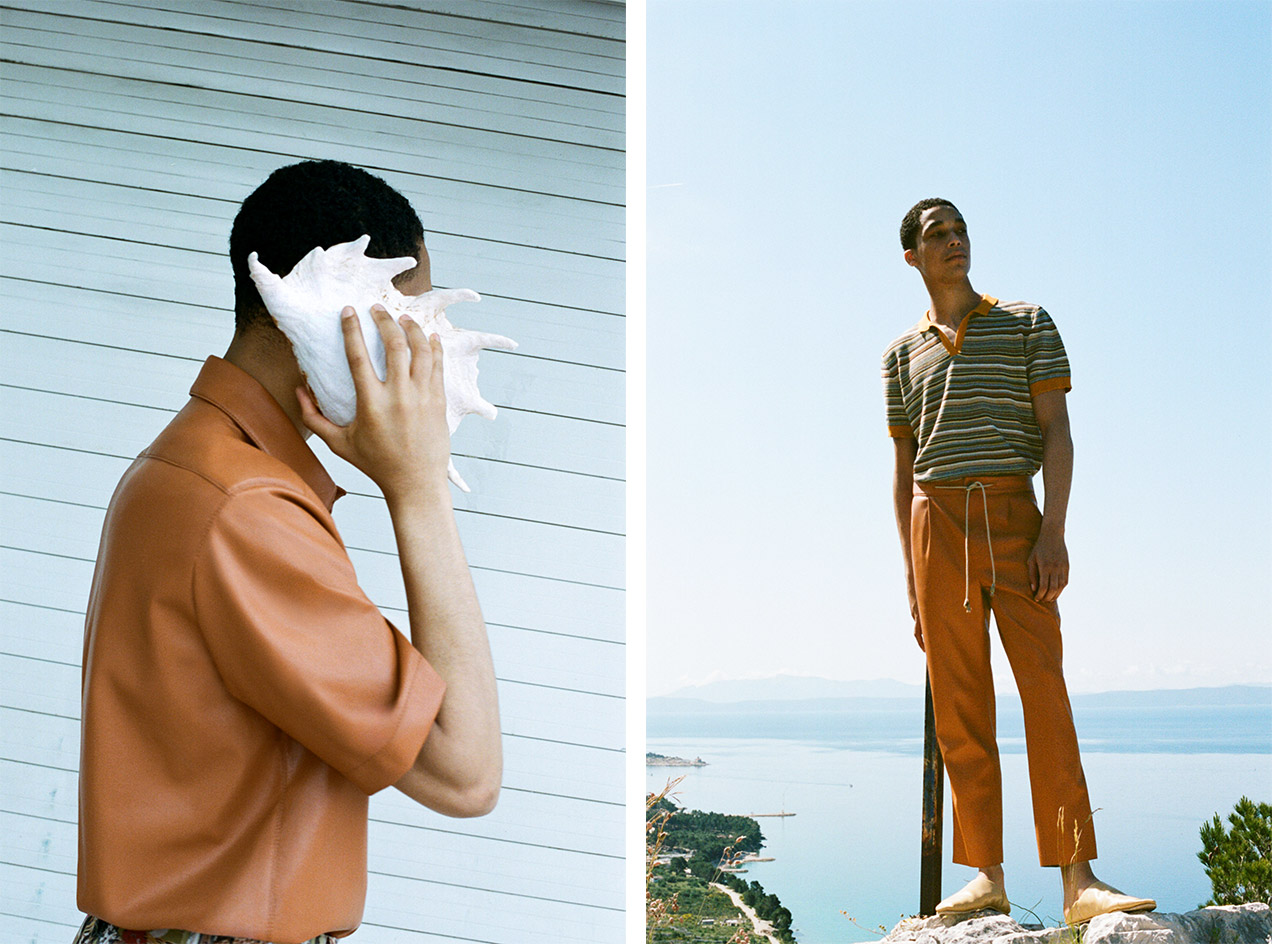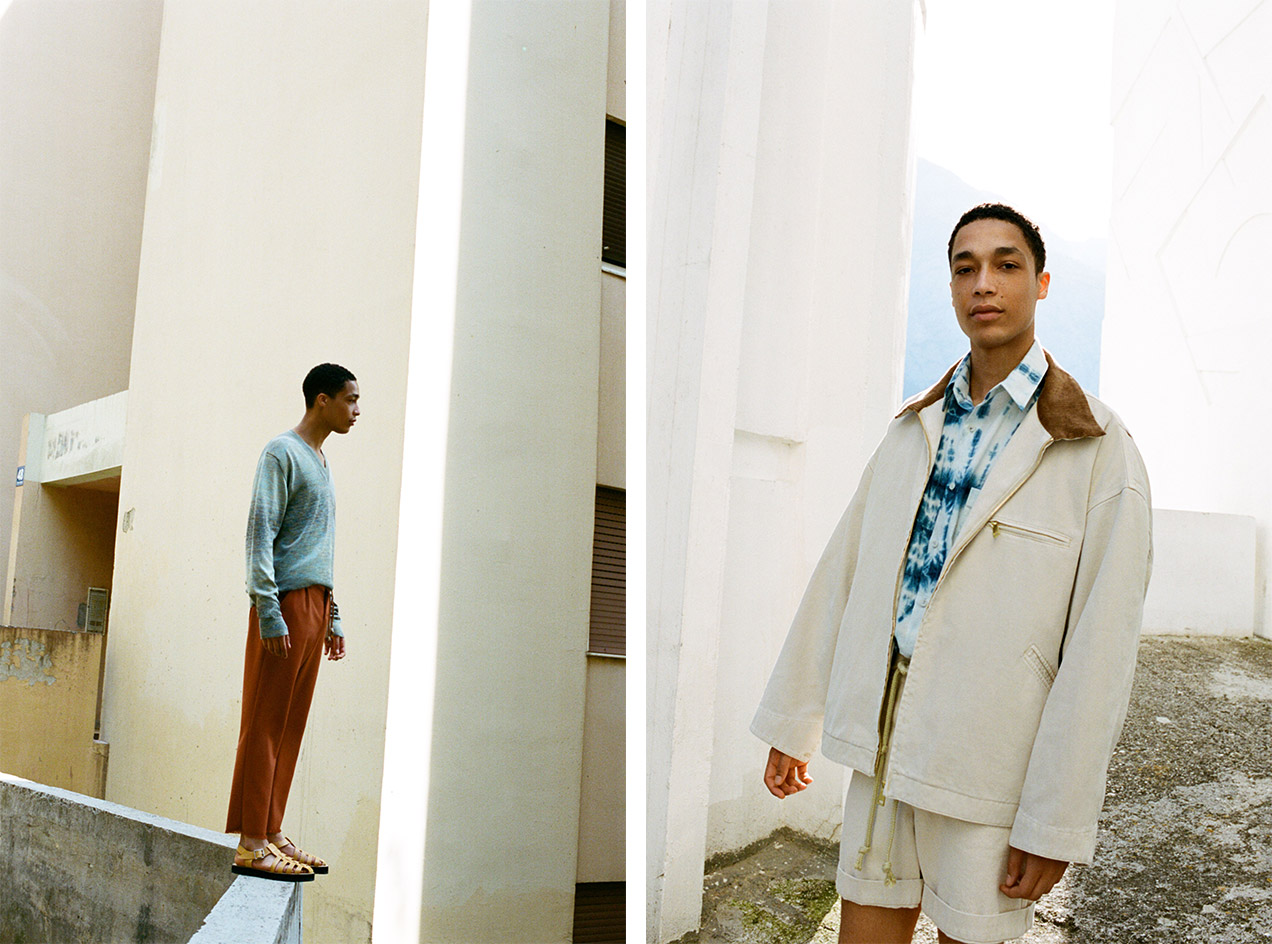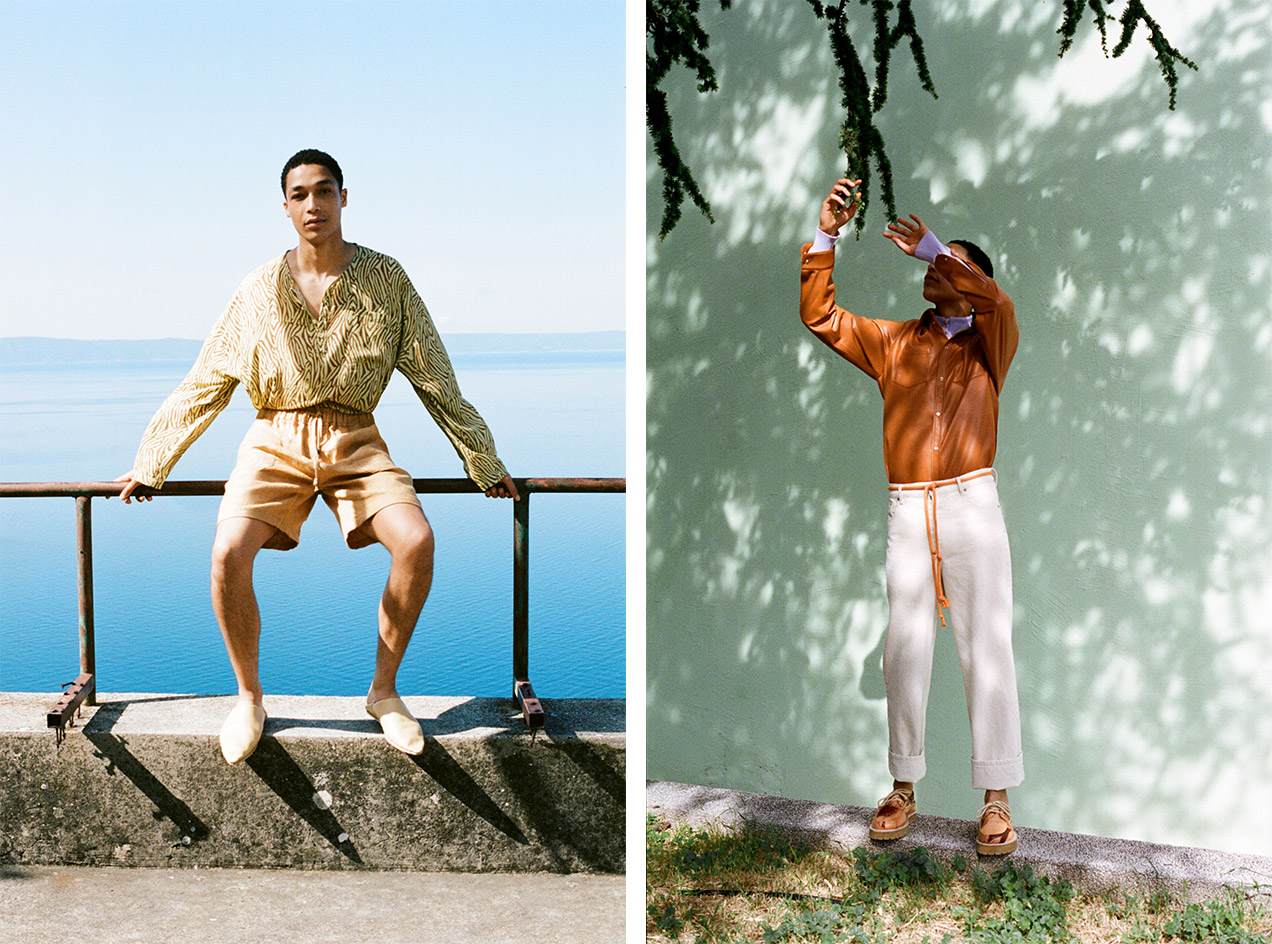Budapest bounty: Nanushka’s modern menswear

Women, chic women, have been throwing on men’s Oxford shirts, roomy boyfriend jeans and neat schoolboy blazers for decades, yet we rarely hear about it swinging the other way. Somewhere between Gaultier’s butch men in skirts and Gucci’s lace blouses, a quieter, modern masculinity is having a moment. ‘I have always been inspired by the fit and shape of men’s clothes for my womenswear, but a lot of menswear is either super extreme or very basic, super classic,’ Sandra Sandor, founder and creative director of Nanushka says. ‘I felt there was something we could do about that.’
For A/W 2019, the Budapest-based brand introduced menswear to its zeitgeisty offering after its signature double wool and silk robe coats and boxy denim shirts began flying out of its flagship store on the backs of men. S/S 2020 saw dusty stripe-knitted polo shirts, loose orange suits and inky tie-dye shirts presented on models in an open-air Paris courtyard, surrounded by geometric sculptures created by Bureau Betak. ‘I usually say that what we do is minimalist bohemian,’ Sandor says smiling. ‘We had a lot of meetings before we came up with that description! But I saw a niche to do something for men that was in the middle – not too classic, not too wild.’
Sandor has cultivated a vast network of fans with her millennial wanderlust meets modernist line, founded in 2005. Whilst at London College of Fashion, she focused her final year collection around the teachings of the Bauhaus and swiftly moved back to Budapest to set up a workshop next-door to her parents’ home. Her mother, who established one of the country’s first children's wear businesses during the Soviet era, had worked from the same building. ‘My mum was quite a daring entrepreneur and, like her, I’m interested in numbers as much as aesthetics,’ Sandor says.
For the first seven years Sandor sold locally to friends and family and then began growing a modest list of international stockists. That all changed when her partner in life and work Peter Baldaszti joined the company as chief executive officer in 2016, bringing in handsome investment and a clear marketing and distribution strategy. Together they have grown the revenue by 1000 per cent. And Sandor’s satin wrap dresses, tiger print separates and puffy satin sandals are omnichannel omnipresent; her signature vegan leather – an EU-certified polyurethane and polyester blend – has revolutionised the fashion industry’s attitudes to sustainability too.
The oversize coats, high-waisted jeans and hooded puffa jackets may seem free spirited and youthful, yet everything is rooted in what Sandor calls the ‘alchemy’ that happens when designer intuition is mixed with commercial data. ‘At the end of the day, the men’s show pieces and all of those really interesting silhouettes, colours and prints are not the ones that sell as well as they would in the women’s collection. Now I have become more playful with this idea of what femininity looks like,’ she says.
The brand now has around 100 employees who work across two floors of a large glass and steel building in the centre of Budapest, overlooking the restoration works taking place around Vörösmarty Square. Fat vintage leather sofas and 1970s brass and smoked glass tables punctuate an otherwise arid space. Sandor’s office is flanked by wooden shutters and dressed in nomadic rugs; samples of handmade ceramic buttons line the walls as do her sketches. Upstairs a group of women plot the drape of dresses and skirts onto computer screens as daylight floods in. ‘We are the first fashion company here to do international export on this scale so we have to dig our own way, there isn’t much expertise we can call upon. I didn’t move back just because of my business. What also matters is my family and my personal life. I love what I do but I really enjoy the time I am not working too.’
Sandor has also found herself having to establish a corporate ethos. Before joining her at Nanushka, Baldaszti had a very specific way of doing business: ‘Peter and his team brought in this culture that thinks you should pick up the phone on the weekend or answer an email at night and we argue about that! We always have these fights about productivity versus efficiency!’ she says. ‘He’s changed slightly because he’s seen that balance is important. In the last few years the company has grown dramatically and I have seen that good things can happen even without me; if I trust other people then something really interesting can be born out of that.’ A business won’t grow without that openness. ‘I need to keep reminding myself that I have to let go of some of my control.’



INFORMATION
Wallpaper* Newsletter
Receive our daily digest of inspiration, escapism and design stories from around the world direct to your inbox.
London based writer Dal Chodha is editor-in-chief of Archivist Addendum — a publishing project that explores the gap between fashion editorial and academe. He writes for various international titles and journals on fashion, art and culture and is a contributing editor at Wallpaper*. Chodha has been working in academic institutions for more than a decade and is Stage 1 Leader of the BA Fashion Communication and Promotion course at Central Saint Martins. In 2020 he published his first book SHOW NOTES, an original hybrid of journalism, poetry and provocation.
-
 All-In is the Paris-based label making full-force fashion for main character dressing
All-In is the Paris-based label making full-force fashion for main character dressingPart of our monthly Uprising series, Wallpaper* meets Benjamin Barron and Bror August Vestbø of All-In, the LVMH Prize-nominated label which bases its collections on a riotous cast of characters – real and imagined
By Orla Brennan
-
 Maserati joins forces with Giorgetti for a turbo-charged relationship
Maserati joins forces with Giorgetti for a turbo-charged relationshipAnnouncing their marriage during Milan Design Week, the brands unveiled a collection, a car and a long term commitment
By Hugo Macdonald
-
 Through an innovative new training program, Poltrona Frau aims to safeguard Italian craft
Through an innovative new training program, Poltrona Frau aims to safeguard Italian craftThe heritage furniture manufacturer is training a new generation of leather artisans
By Cristina Kiran Piotti